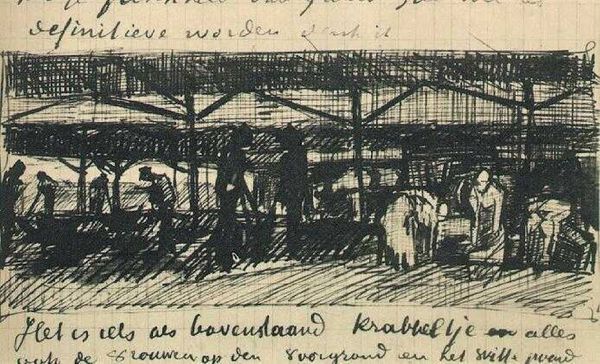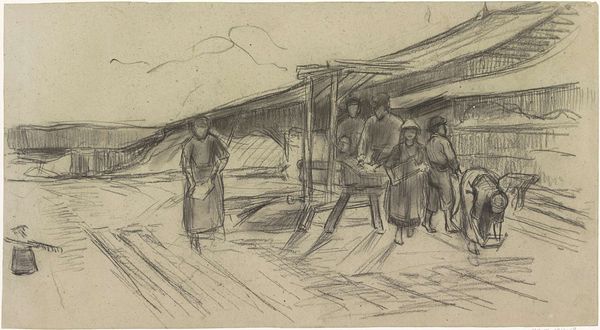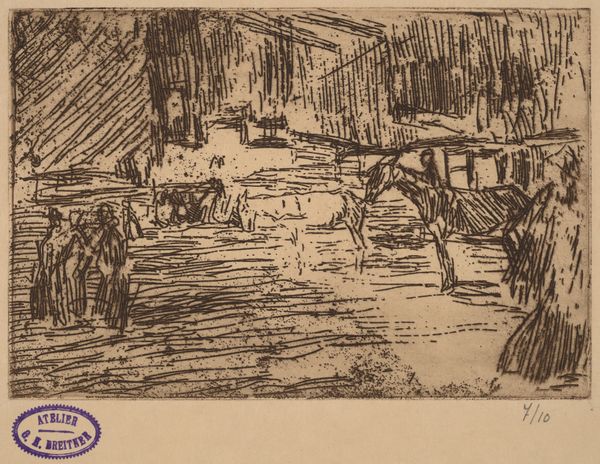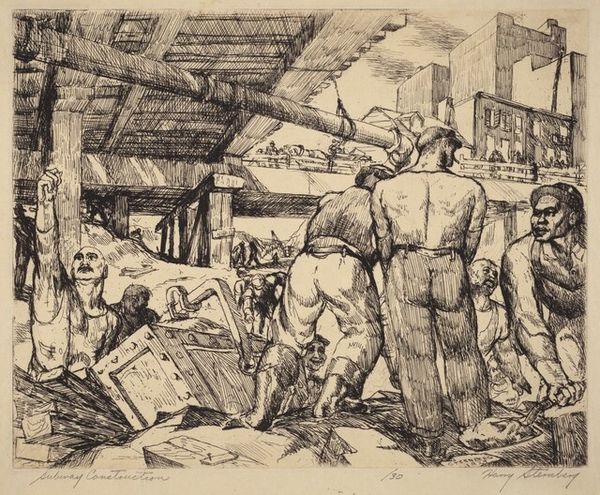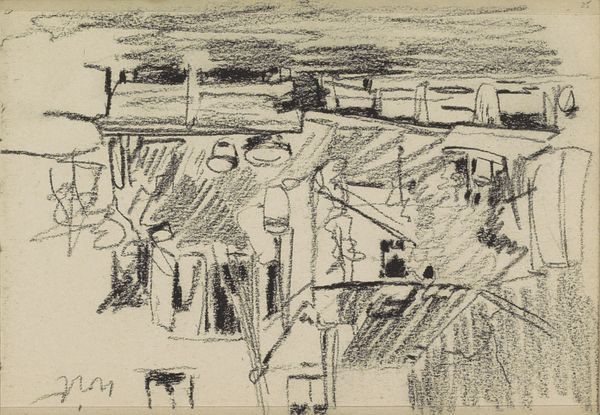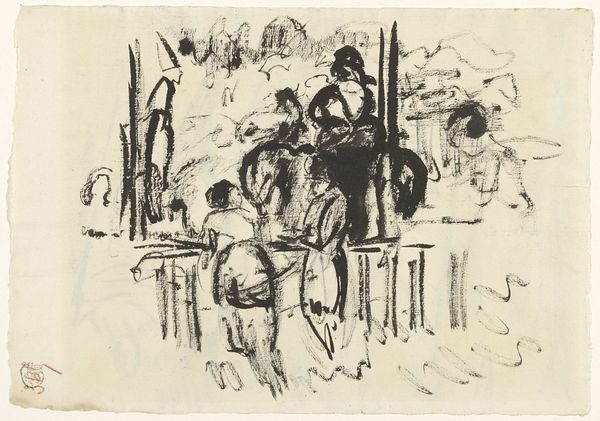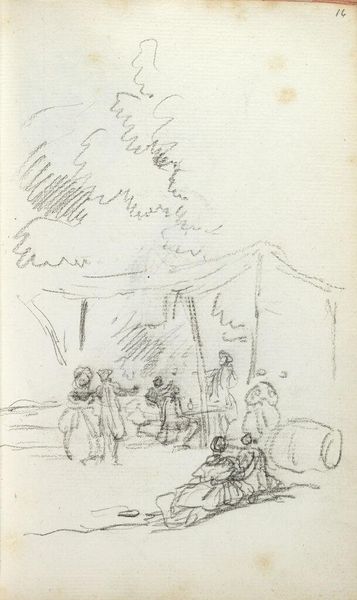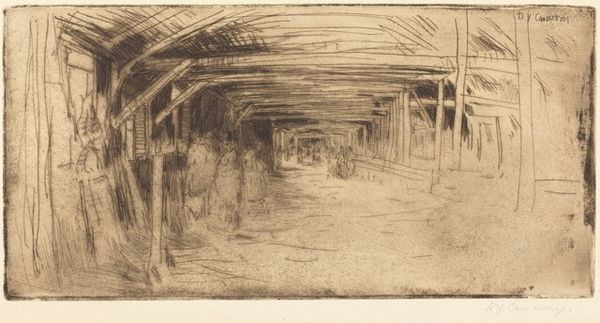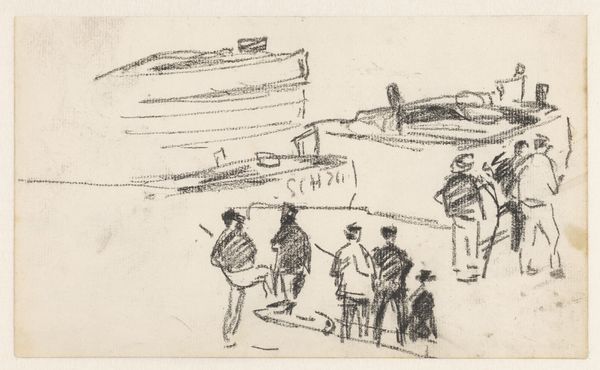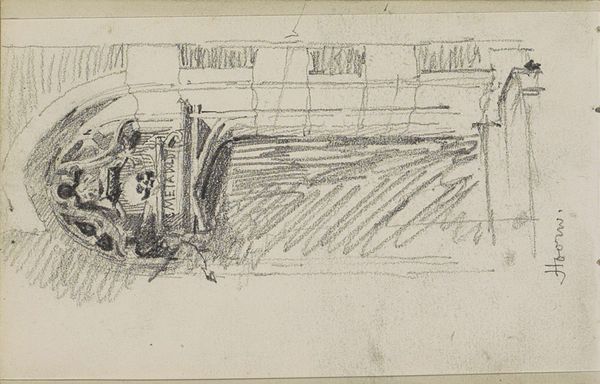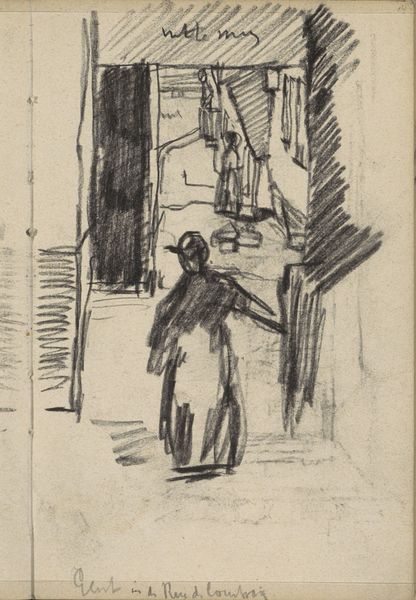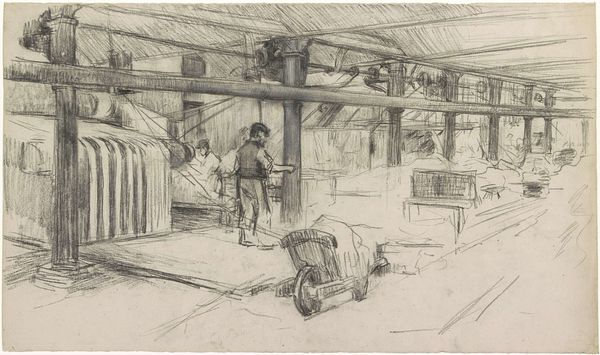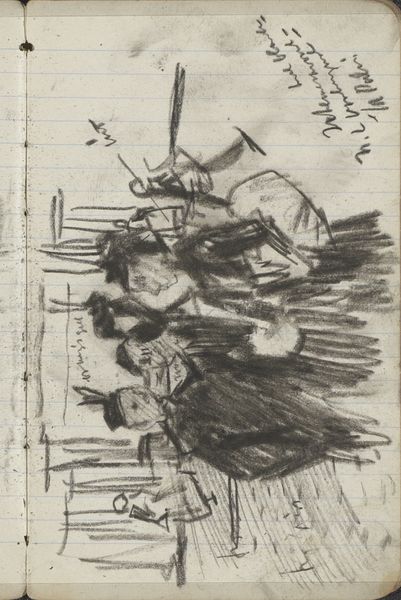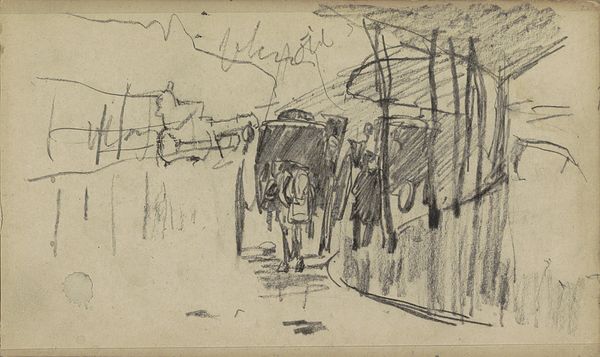
drawing, ink, pen
#
drawing
#
ink drawing
#
pen drawing
#
impressionism
#
landscape
#
figuration
#
ink
#
pen
#
genre-painting
#
realism
Copyright: Public domain
Editor: Okay, next up we have "Garbage Dump" created in 1883 by Vincent van Gogh, rendered with pen and ink. It’s…somber. The density of the lines really creates a feeling of oppressive labor. What stands out to you? Curator: Immediately, I think of the social context of the time. Van Gogh, particularly early in his career, was deeply concerned with depicting the lives of the working class. This wasn't just about artistic style, it was a conscious choice reflecting his beliefs. What kind of public do you think this type of representation engaged? Editor: It feels… confrontational. These aren't idealized workers, but figures almost swallowed by their environment, engaged in a really gritty labor. It definitely challenges the viewer. Curator: Precisely. Think about the art establishment and the typical subject matter deemed worthy of artistic attention then. Van Gogh is positioning the laboring classes as subjects with inherent worth, disrupting established hierarchies of representation. He brings visibility where there was societal disregard. Why a "Garbage Dump"? Editor: Is he commenting on how society treats its working class, discarding them after they are exhausted? Curator: It’s a valid reading. Consider also how realism as a movement influenced him. This raw depiction aims for an honest portrayal of working conditions, prompting social awareness and empathy. Museums historically favored heroic narratives; by showing this drawing are they giving legitimacy to social critique? Editor: That's powerful. Seeing it that way, the image transforms from simply bleak to something deliberately challenging the status quo and institutional conventions about beauty. I really underestimated its social power. Curator: Absolutely. Now, understanding Van Gogh's drawing within its historical and institutional contexts helps us recognize art as not merely aesthetic objects, but powerful agents of social commentary and change.
Comments
No comments
Be the first to comment and join the conversation on the ultimate creative platform.
